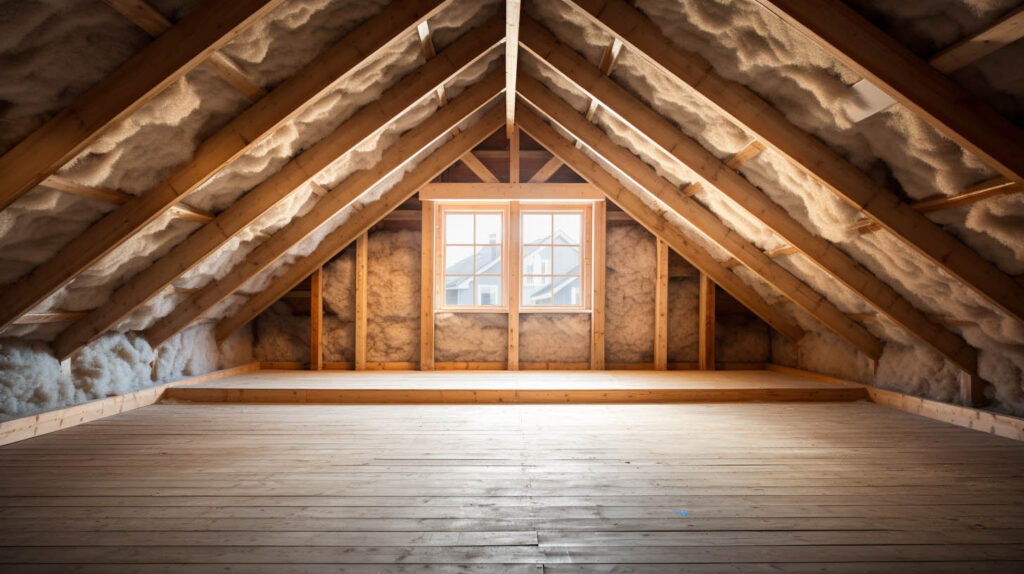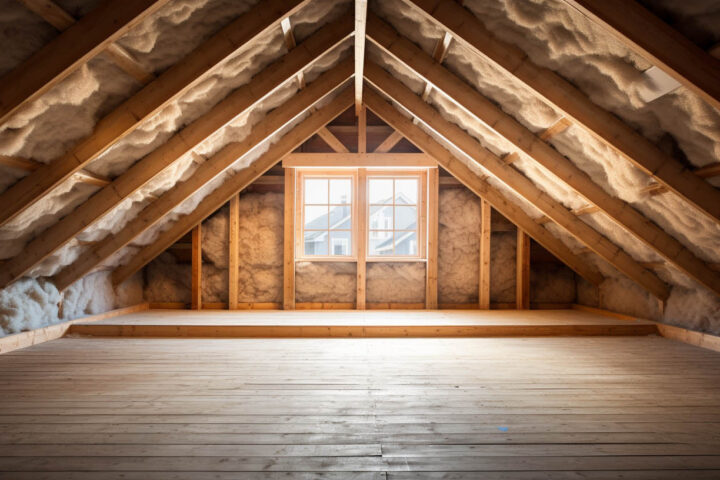
Introduction to Attic Insulation Varieties
In the quest for energy efficiency and home comfort, attic insulation stands as a pivotal element. It’s not just about keeping a house warm in winter and cool in summer; it’s about creating a sustainable, cost-effective living environment. As industry leaders, we at Roof Repair Specialist understand the significance of selecting the right insulation type for your attic. This article delves into the various attic insulation options, offering insights to help homeowners make informed decisions.
Batt and Roll Insulation: The Traditional Choice
Batt and roll insulation, commonly made from fiberglass or mineral wool, is a popular choice for many homeowners. This type of insulation comes in pre-cut panels or rolls that fit snugly between the joists and studs in your attic. It’s an affordable and effective solution, especially for attics with standard spacing between joists and minimal obstructions. The installation process is straightforward, making it a viable option for DIY enthusiasts.
Key Advantages:
- Cost-effective
- Easy to install
- Suitable for standard joist spacing
Loose-Fill and Blown-In Insulation: Flexibility and Coverage
Loose-fill insulation, often comprising fiberglass, cellulose, or mineral wool, is ideal for attics with irregular joists or numerous obstructions. This type is installed using a special machine that blows the insulation into place, ensuring complete coverage even in hard-to-reach areas. It’s particularly effective in preventing heat loss and ensuring a uniform thermal barrier across the attic.
Key Advantages:
- Comprehensive coverage
- Ideal for irregular spaces
- Excellent for retrofitting older homes
Spray Foam Insulation: The High-Performance Option
Spray foam insulation, available in open-cell and closed-cell varieties, offers superior performance. This type is sprayed as a liquid that expands and hardens, filling gaps and creating an airtight seal. It’s an excellent choice for preventing air leaks and moisture intrusion, making it a favorite among roofing contractors in Los Angeles.
Key Advantages:
- Airtight seal
- Moisture barrier
- Superior thermal resistance
Reflective Insulation: Combatting Radiant Heat
Reflective insulation, made from aluminum foil and other reflective materials, is designed to combat radiant heat transfer. It’s particularly effective in hot climates, reflecting the sun’s heat away from the attic. This type is often used in conjunction with other insulation materials to enhance overall thermal performance.
Key Advantages:
- Effective against radiant heat
- Enhances other insulation types
- Ideal for hot climates
Rigid Foam Insulation: The Versatile Performer
Rigid foam insulation, known for its high insulating value per inch, is a versatile option suitable for various applications. It can be used to insulate attic floors, walls, and even rafters. Available in different thicknesses and with varying R-values, rigid foam offers excellent thermal resistance and can be an integral part of an energy-efficient roofing system.
Key Advantages:
- High R-value per inch
- Versatile applications
- Effective for rafters and walls
Conclusion: Tailoring Insulation to Your Needs
At Roof Repair Specialist, we understand that every home is unique. Choosing the right attic insulation is crucial for maximizing energy efficiency and comfort. Whether it’s the traditional batt and roll, the adaptable loose-fill, the high-performance spray foam, the radiant-heat combating reflective, or the versatile rigid foam, each type offers distinct benefits.
For homeowners seeking a roofing company in Los Angeles that prioritizes quality and expertise, Roof Repair Specialist stands ready to assist. Our commitment to excellence ensures that your attic insulation is not just a barrier against the elements but a long-term investment in your home’s health and efficiency.





